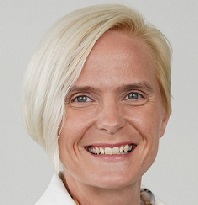Home > Columns > Executive Interviews
Mosaicx Executive Interview

Rebecca Jones, President, Mosaicx
Click image below to view the ebook

Rebecca Jones, President of Mosaicx, discusses their product strategy
with Sheri Greenhaus, Managing Partner at CrmXchange. Jones highlights
Mosaicx's focus on human-centric customer interactions, revealing insights from
their recent workshop on AI's impact on contact centers. They explore the need
for mental wellness support for agents and the evolving role of professionals
in contact centers. Both emphasize the importance of destigmatizing contact
center work and adapting to the changing landscape of customer conversations.
Sheri Greenhaus: Let’s talk about what is new to Mosaicx since our last
discussion.
Rebecca Jones: We were incredibly honored to be named runner-up among some truly
innovative companies nominated for the CCW Excellence Awards.
This year, we launched Mosaicx360, a fully integrated ecosystem of
products across our portfolio. This includes Mosaicx Engage, our IVA product;
Mosaicx Outreach, an AI-driven campaign and messaging tool; Insights360, an
end-to-end analytics tool; and Advisor, which provides professional service
expertise and tools to evolve CX operations.
This ecosystem of products works together to offer our contact centers
unparalleled issue resolution and customer satisfaction. We’re thrilled to have
moved from individual products to a fully functional, integrated brand
approach. This integration stems from our 30 years of experience in the space
and the exceptional talent within our organization, who truly understand the
contact center landscape and its challenges. We've designed our products to
address the specific problems these businesses face.
About seven years ago, West acquired a company with patents on a product
that monitored both sides of a call – the consumer side and the IVA side.
Initially, it was an underutilized standalone product. Over the past year,
we’ve fully integrated it as Insights360 and positioned it as a powerful
cost-saving tool. For instance, we implemented it with a large financial
company, achieving a full ROI in eight weeks and finding $700,000 in savings
within two weeks. They made the necessary changes and fully funded their
initial spend in eight weeks. Now, they’re expanding our product to other parts
of their business.
Sheri: How did they save money?
Rebecca: They had a custom-built internal IVA and lacked the ability to understand
the full customer experience. They aimed to improve customer experience, CSAT,
NPS scores, and identify cost-saving opportunities. We provided them with a
comprehensive view of the experience, including the consumer's perspective. We
offer intent analysis on the caller, identifying moments of frustration or
satisfaction, and highlight areas in their IVA that may need evaluation. This
has been very eye-opening for this customer.
This past year, we also launched our Expert product, which leverages
generative AI. We will continue to integrate it into our full ecosystem. We see
Mosaicx360 as an opportunity to leverage AI and generative AI across all our
products, enhancing customer experiences through various channels and modes our
customers prefer, such as chat, SMS, and voice.
Sheri: How do you compare to other
companies?
Rebecca: Our differentiation
lies in our extensive experience. Many of our team members have worked in
contact centers or closely with them, which gives us a unique perspective. Our
company originated from a contact center solution within West Technologies
Group, so we have people with firsthand experience in that environment. When
West pivoted away from the actual contact center operations but kept the
IVA/IVR technology component, it set the stage for our future. Two years ago,
we moved everything from old legacy data centers to the cloud, which allowed us
to scale the business and transition to a true AI-driven SaaS model. Just
before completing this migration, I joined the team and saw the need for
strategic changes.
We’ve also established our Customer Advisory Board, holding
kickoff meetings and investing in listening to our customers. This helps us
shape our products to better suit their needs. We’ve intentionally ensured
diverse attendance on our advisory board, making our discussions well-rounded
and insightful.
We’ve hosted smaller exchange meetings and workshops,
focusing on topics like generative AI and conversational AI. These sessions
have been great learning opportunities, providing insights into the market and
helping our salespeople understand how our products fit into different business
contexts.
Our strategy focuses on further integrating AI into our
products and staying responsive to market changes. A key challenge is
distinguishing between what is a temporary trend and what will contribute
meaningfully to the future of the contact center space. Initially, there was a
rush to plug AI everywhere, with promises of replacing call center agents and
saving costs. Many vendors built chatbots, calling them AI solutions. We took a
different approach. We believe that a chatbot platform alone isn't the answer.
Consumers may not accept it universally, although there are specific use cases
where it fits. We saw competitors fully investing in chatbots as their primary
product, but we decided to focus on integrating technology into contact centers
to enhance rather than replace human interaction.
We had a critical conversation with our CEO and board about
our identity as a company. Are we a contact center killer aiming to replace
contact centers, or are we a partner? I believe there will always be a need for
human interaction at some level. Our goal is to optimize both the employee and
customer experience across the ecosystem. We aim to build technology solutions
that integrate smoothly and humanely, enhancing the conversational component to
feel more lifelike and natural. We're also focused on reducing AI hallucination
and maintaining a balance between technology and the human touch.
Sheri: While there is a lot of
discussion around bots, sometimes you just need to talk to a human.
Rebecca: Exactly. Sometimes,
speaking to a human can make you feel better and more effective in achieving
your goals. It's not just about flipping a switch to talk to a person; it's
about the emotional connection and the ability to influence decisions through
conversation. Text can feel cold, whereas a conversation is more dynamic and
personal. Interestingly, at our last workshop in St. Louis, attendees discussed
how generative AI is changing contact centers. The goal is often to eliminate
easy calls, but this leaves agents handling only complex, stressful
conversations. For instance, two companies—one in healthcare and one in
banking—have hired Chief Wellness Officers to focus on the health and
well-being of their contact center agents. These agents are 85% more stressed than
before implementing AI because every call they handle is difficult.
Studies suggest that handling simpler tasks, like password
resets, provides mental breaks for agents, helping them reset between more
challenging calls. Without these easier tasks, agents move from one stressful
situation to another, leading to burnout. Traditional breaks are insufficient
for managing this stress, so these companies are implementing wellness
programs. For example, in the healthcare sector, agents receive funny emojis
every 15 minutes, creating brief, lighthearted breaks.
Although this may seem like lost productivity in a
traditional call center model, modern AI-driven solutions reduce call volume,
allowing agents to spend more time on each call.
Sheri: It's a different kind of agent
too. Maybe you need people with specific skills or backgrounds.
Rebecca: Absolutely. One company
found they needed to hire analyst-level employees for their contact center.
However, attracting college graduates to work in a call center is challenging.
It's a cultural and psychological issue; how do you encourage professionals to
see the value in these roles?
The nature of conversations with customers is evolving,
requiring a more thoughtful approach. This evolution is happening across the
industry, with some companies adapting quickly while others take a more gradual
approach. The spectrum of adoption is broad, and we need to destigmatize
contact center work.
It will be interesting to see how these changes unfold over
the next year.